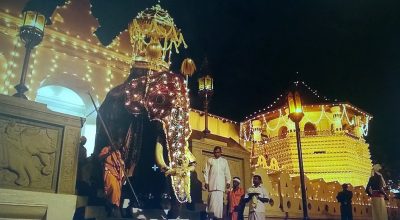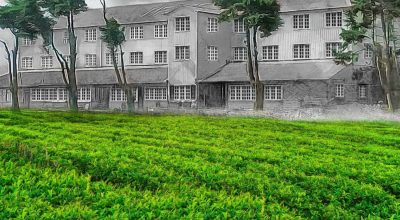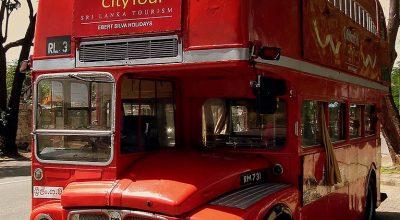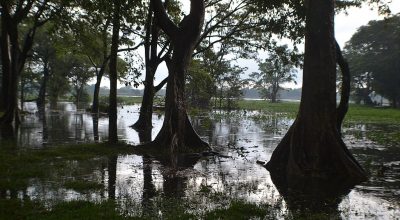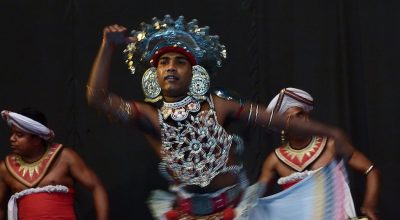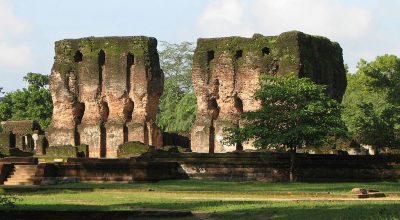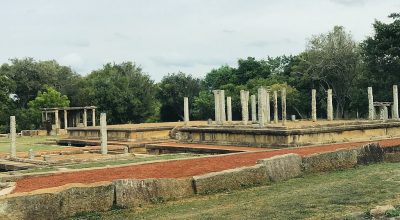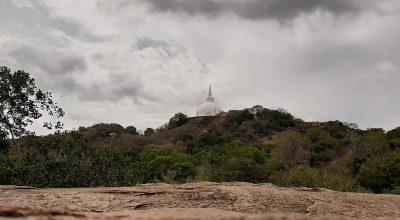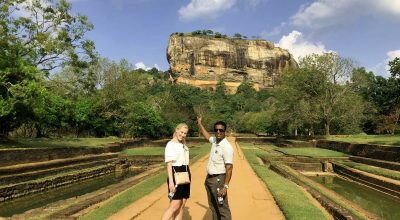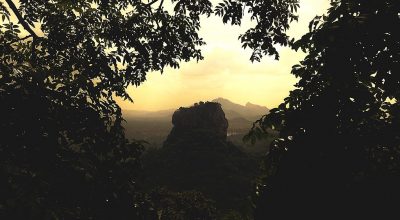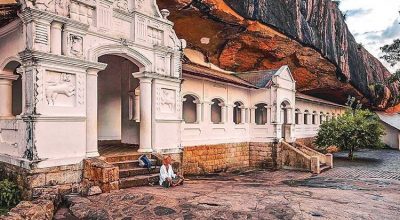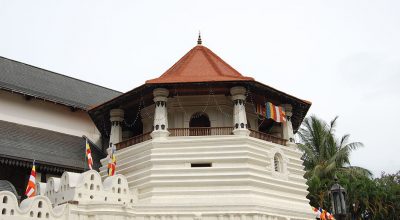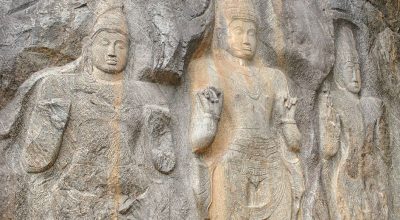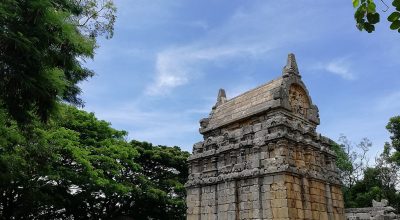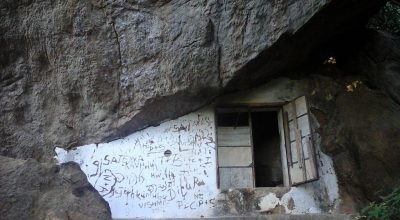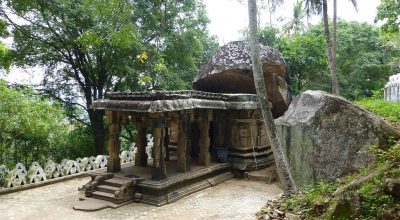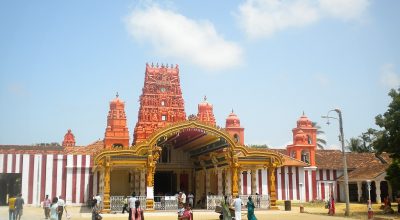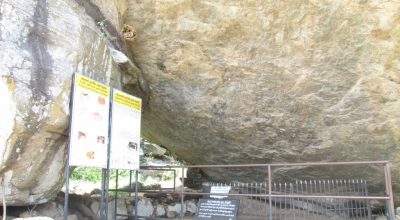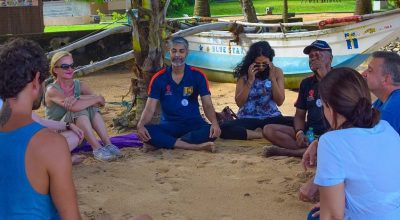Cultural & Heritage
Sri Lanka’s wildlife is as varied as the island itself, ranging from elephants and leopards to marine life and a vast number of different birds, and Sri Lanka is now one of the best places in the world to see whales, including the mighty blue whale.
With 12% of the country designated for wildlife protection, it is easy to get a taste of Sri Lankan wildlife: safari parks and sanctuaries, particularly in the southern and central zones, offer the easiest way to see animals in their natural habitat. Stay alert for a sighting of the endangered leopard; take your time as you watch the elephants feeding and washing in a tank or lagoon or walk quietly along the beaches of the west and south coast near to marine turtles as they lay their eggs.
The Kandy Perehera’s is a grand festival celebrated annually in July and August to pay homage to the Sacred Tooth Relic of Lord Buddha, housed at the Temple of the Tooth in Kandy.
An iconic festival of Sri Lanka, the procession consists of traditional local fire-dances, whip-dances and Kandyan dances, in addition to elephants who are usually adorned with lavish garments.
A visit to Sri Lanka’s hill country isn’t complete without a visit to a Sri Lanka tea factory which allows you to see, smell, taste and touch our island’s humble brew at every stage of its production process. You might like to walk through the plantations and see the ladies at work, plucking tea before taking a guided tour of a tea factory which ends with a tea tasting session of the different varieties grown at the plantation. A factory visit normally lasts about an hour and also provides a good chance to buy fine Sri Lanka tea at reasonable prices.
The Colombo City Tour adds flavor and excitement to the touristic experience the city of Colombo has to offer. This Full day narrated Colombo tour will expose you to the brimming culture and history that is existing in Colombo. Throughout your tour learn more about the attractions you visit from your private guide’s narrations.
This tour is ideal for passengers with stopover at Colombo or those who prefer a whirlwind experience. The tour schedule is flexible making it an even more convenient way to explore Sri Lanka’s commercial capital. From the bustling streets to the vibrant markets with bargaining aunties, the posh boutique restaurants to pristine parks, witness it all. An ancient favorite of port-trading merchants, the city is a harmonious blend of religions and cultures.
Hailing from the City of Gems, the Gem Museum is in its fourth generation as a family owned business, and it is a name synonymous with only the finest gemstones in Sri Lanka.
Whether you are a traveler looking for a timeless memento or someone seeking the ideal gift with the right sparkle or even a true aficionado with an appreciation for the finer things in life, your quest ends here.
This typical countryside experience includes a jeep ride into the rural village of Hiriwadunna from your hotel, along with a small trek that begins with a beautiful walk beside a man-made reservoir. For the ultimate experience in living like a local, hop on a traditional boat to cross small lakes, and take a bullock cart ride through rural vegetable cultivation, paddy fields and enjoy an authentic Sri Lankan lunch at a farmer’s house.
Beat of traditional music & drumming amplified by a cultural show enhancing the rich and vibrant culture of the Wonder of Asia, Sri Lanka. (Starting time 5.30pm | Duration 45Minutes)
Polonnaruwa the ruined city which displays the influences of both Indian and Sinhalese cultures. See the world famous Polonnaruwa Gal Viharaya consisting of three huge stone monoliths of the Lord Buddha, in a sitting, standing and reclining positions. See the Vatadageya, Sathmahal Prasadaya, Rajasaba Mandapaya, Nisshanka Latha Mandapaya, Parakrama Samudra the most famous places of Buddhist interest in Polonnaruwa ancient city
Anuradhapura which was the 1st chronicled capital of ancient Ceylon. Sri Lanka’s first capital is situated in the dry zone. It is one of Sri Lanka’s premier ancient cities. Attractions: The sacred Bo Tree, temples, Brazen Place, Samadhi Buddha, Kuttam Pokuna, and Mihintale (12 kilometers from Anuradhap ura) – a rock dotted with shrines and dwellings – a grand stairway of 1,840 steps made of granite slabs that leads to a summit with a splendid view of the countryside. Among the ruins of this once magnificent city, Anuradhapura, is the Ruwanvaliseya Temple, situated in the Mahamega Gardens. Built in the second century B.C by King Dutugamunu… It is 100 metres tall, 77 metres wide, and 300 ft in diameter
Mihintale, a mountain peak near Anuradhapura in Sri Lanka. It is believed by Sri Lankans to be the site of a meeting between the Buddhist monk Mahinda and King Devanampiyatissa which inaugurated the presence of Buddhism in Sri Lanka. It is now a pilgrimage site, and the site of several religious monuments
Considered the 8th wonder of the world, Sigiriya was built in 5 AD by patricide King Kasyappa and boasts the world famous frescoes of women carved on sheer rock face. Climb the rock fortress and marvel at the feats of architecture achieved in the moats, the lions paw and finally at the summit of the rock, where the palace was situated. King Kasyappa had 500 hand maidens living in this palace.
Set in close proximity to the iconic Sigiriya Rock Fortress, Pidarungula Rock provides an incredible alternative and an additional experience of the views of the UNESCO World Heritage Site, and this rock too dates back to the 6th Century AD, just like Sigiriya. The base of the rock has a temple and this rock is also believed to have been used as a place of worship and a hideout for Sri Lanka’s ancient King Kassapa, who at the time was exiled by ambitious brothers, who eventually killed him. There is also an ancient inscription here, carved into the rock. The visit to the summit of Pidarungula rock involves climbing a series of steps, sometimes through jungle and around the edges of the rock. The hike usually takes about 30 minutes one way, and towards the summit it gets harder as visitors are required to climb over large boulders.
Point of Sri Lanka, Dambulla is a town built around a vast isolated rock mass 500 ft and a UNESCO World Heritage Site. It was here that King Valagambahu took refuge in the 1st century B.C. The view from the top of this rock is breathtaking 350 ft. above are a series of five caves which was later turned into a magnificent rock temple by King Valagambahu. In the first cave is a recumbent image of the Buddha 47 ft, long, cut out from the rock. There are images of deities associated with Buddhism.
The frescoes on the walls and ceiling could be dated to the 15th – 18th centuries. In the second cave, the finest and the largest, are not less than 150 life size statues of gods. There are numerous images of the Buddha as well. The ceiling too is covered with frescoes which depict great events in the life of the Buddha, and landmarks in the history of the Sinhala People
Girdled by hills, Kandy is a peaceful haven to retire to and enjoy the cool of the climate. Once the stronghold of the Sinhala Kings, the focal point of the town is the golden-roofed Dalada Maligawa where the sacred tooth of the Lord Buddha is enshrined. Kandy, at an altitude of 500m is the cultural center of Sri Lanka and was the capital of the last Singhalese kingdom. It is a particularly relaxed hill station, once captured by the British. It is dominated by its lake and the nearby Temple of the Tooth which houses Sri Lanka’s most sacred relic.
A visit to Buduruwagala makes for a great stop en route the south coast and the eastern hills, or as a day trip from the hills. Standing at 50 feet, the largest standing Buddha statue in Sri Lanka is hewn out of a single piece of rock at Buduruwagala Temple, just off the road between Beragala and Welawaya in the south eastern hills. The drive here is a scenic one and along with the 50ft Buddha, the complex consists of six smaller statues, with three to each side of the main statue, and has frequent monkeys visiting the site.
Hidden away in the Moneragala District of Uva Province, the Maligawila Buddha is the tallest free-standing Buddha statue in Sri Lanka, standing at 45ft high. Carved from a single piece of limestone rock, the statue dates back to the 6th/7th Century AD when it was built by the first Aggabodhi, a prince from the southern kingdom of Ruhunu. The site also contains a rock Bodhisattva, standing at 34ft tall. The monastic complex used to be inhabited by a sect of hermit monks.
Nalanda Gedige is an ancient complete stone temple near Matale, Sri Lanka and its original site was considered as the center of Sri Lanka. The building was constructed in between 8th and 10th centuries with dravidian architecture in( Pallava style )and is believed to have been used by Buddhists. Also some scholars describe this building is a dravidian architecture dedicated to a Mahayanaa cult with pronounced Trantric learning and known for an ancient monument of possible Vajrayana (Tantric) Buddhist affinities.
Piyangala Forest Hermitage lies on the Ampara – Mahaoya road about 27 km on away from Ampara covering a vast area of scattered ancient ruins of a Buddhist monastic complex. This complex has been a forest hermitage in the past with over 50 caves with drip ledges. The ledges indicate that these caves were home to forest dwelling meditating Buddhist priests in the ancient past.
The shrine of Ridi Vihare has its beginnings in a series of cave dwellings on the rocky hillside. In the early days of Buddhism these were once inhabited by meditating monks. Numerous Brahmi inscriptions record the donation of caves for the use of the Sangha and at one time there were thought to be nearly 500 priests residing in the caves on the hillside.
According to the Mahavamsa, the story of Ridi Vihare begins during the reign of King Dutu Gemunu. The greatest king of Anuradhapura, Dutu Gemunu was the first ruler to bring the whole island under his sway.
The Nallur Temple in Jaffna is a Hindu temple, highly frequented by the Tamils residing in this place. Main deity of the temple is Lord Murugan. A temple car festival is held here every year. Temple opens from 6:00 am to 5:00pm.
Set amongst an incredible sea of granite rock, the ancient monastic settlement of Tantirimalee goes right back to the pre-Christian era. Located just east of the northern tip of Wilpattu National Park, en route to the far north and Mannar, the site is well known for its temple, the Tantirimalee Raja Maha Vihara. However, it is the scenery that is the real draw card here, with granite kopjes littered throughout the region, the entire monastic complex was built on, and out of, the stone, with stupas, a reclining Buddha, a meditating Buddha and ancient reservoirs all showing the excellent craftsmanship of the people who resided here.
Sri Lanka’s Aborigines’, or the Veddha’s meaning “people of the forest” of Sri Lanka has a history much older than prince Vijaya’s landing in 5th century BC and the origins of the Sinhala race. Archaeological evidence suggest that modern Veddha’s Neolithic ancestors inhabited this island as far back as 10,000 BC with. Once roaming the Great Plains’ of the north central region to the central mountains, today the remaining Veddha population are confined to Dambana which is close to Maduru oya sanctuary.
The Foundation of Goodness currently offers volunteer experiences for people of all ages to offer their skills and passion in service of Sri Lankan communities disadvantaged by poverty and lack of opportunities. The Good Life Institute aims to offer a Good Life Experience, which will incorporate Foundation of Goodness volunteer experiences complemented by restful, contemplative and nature-centric activities. The Good Life Experience will be catered to small groups of adults, young adults and families.

